
Flour does things to chicken that egg-based batters only dream of. Dredging creates an ultra-thin coating on chicken that acts as insulation, helping keep the meat moist during baking. Dredged chicken develops a crisp, light shell that adds just a touch of crunch, and its skin has a more consistent golden-brown color than plain chicken. Best of all, when you incorporate spices in flour, they develop richer, deeper flavors and aromas than when cooked alone. You can't go by taste when you season flour -- starch coats the tongue and masks the flavor -- so you have to rely on ratios when adding spices.
Flour Power
Step 1
Sift about 1/2-cup all-purpose flour for each chicken through a flour sifter and into a mixing bowl.
Step 2
Add dried spices to the flour. An 8:1 ratio of flour to dried spices, or 1 tablespoon of dried spices for every 1/2 cup of flour, prevents one spice from overpowering the entire lot. You can use any type of dried spice you like to comprise the 1 tablespoon of spices. For example, for a classic fried chicken mix, use paprika, onion powder and garlic powder. For a Southwestern-style seasoned flour, add dried cumin, chili powder, cilantro and thyme. You can use as many different spices as you wish, but to keep the flavors balanced, they must total no more than 1 tablespoon per 1/2 cup of flour.
Step 3
Mix the seasoned flour with a balloon whisk for 2 or 3 minutes. Balloon whisks have a shape designed for mixing dry ingredients, which helps uniformly disperse the spices in the flour.
Step 4
Sift the seasoned flour through a flour sifter and into a shallow, wide baking dish. The final sifting breaks up any clumps and helps evenly distribute the spices throughout the flour.
Shake Before You Bake
Step 1
Remove the chicken pieces from the refrigerator and place them on a plate. Pat the chicken pieces dry with paper towels and heat the oven to 350 degrees Fahrenheit.
Step 2
Melt about 1/4-pound butter in a saucepan over low heat for every chicken you will dredge. The butter solids caramelize in the oven and meld with the seasoned flour to enrich the flavors and aromas and help the chicken skin crisp when the moisture evaporates from it.
Step 3
Season the chicken pieces to taste with kosher salt and freshly ground black pepper on all sides. Coarse salt, such as kosher, and coarse pepper, such as freshly ground, give the chicken and seasoned flour more texture, more substance and a better aroma than iodized salt and dried-ground pepper.
Step 4
Dredge the chicken pieces in the flour one at a time. Place a chicken breast skin-side down in the seasoned flour; then turn it over so it sits in the flour skin-side up. Pick the breast up by the corner and shake it gently to remove the excess flour. Excess flour produces an uneven coating on the chicken and can burn if it falls onto the baking pan. Lay the chicken breast skin-side up on a plate or in a dish.
Step 5
Repeat with the other chicken pieces; laying them down in the flour one at a time, turning them over, shaking off the excess and placing them skin-side up on a plate or in a dish.
Step 6
Take the butter off the stove and pour it in a bowl. One at a time, dip each piece of dredged chicken in the melted butter and let the excess drip off into the bowl. Place the dredged and buttered chicken skin-side up on a rimmed baking sheet. Space each piece about 1 to 2 inches apart. Place the chicken in the oven.
Step 7
Bake the chicken for 35 to 45 minutes, or until each piece reaches an internal temperature of 165 F. The wings will finish first, so take them out when they reach 165 F; set them aside on a plate covered with aluminum foil while the other pieces finish.
Step 8
Check the internal temperature of each piece of chicken. Insert a meat thermometer through the thickest part of each piece, avoiding the bone, and check the temperature gauge after 10 seconds. You can take the chicken out when it reads about 160 F, because the internal temperature will rise by about 5 degrees from carry-over cooking.
Step 9
Place the chicken on a plate and let it rest for about 10 minutes before serving.
Related Articles

How to Make Crispy Fried Chicken With ...

How to Bake Crispy Battered Chicken

How to Get a Thick Coating on Fried ...
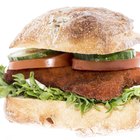
How to Cook Chicken Schnitzel

How to Cook Crispy Chicken Strips
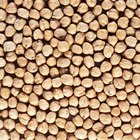
How to Roast Chickpea Flour

How to Cook Drumsticks With Bread ...

How to Cook a Thin Breaded Chicken ...

How to Cook a Baked Panko Chicken Liver

How to Broil Chicken on the Bone
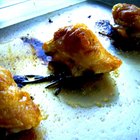
How to Cook Chicken Thighs
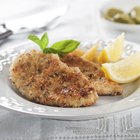
How to Cook Chicken Cutlets Without ...

How to Slow Cook Chicken Without a Slow ...

How to Cook Chicken in Olive Oil With ...
How to Cook Boneless Skinless Chicken ...

How to Make Chicken Just Like the KFC ...
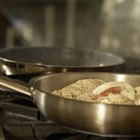
How to Slow Cook a Chicken Breast

How to Make Good, Crispy Fried Chicken

How to Cook Chicken Legs With Italian ...
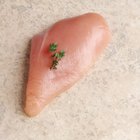
How to Preserve Chicken
References
Writer Bio
A.J. Andrews' work has appeared in Food and Wine, Fricote and "BBC Good Food." He lives in Europe where he bakes with wild yeast, milks goats for cheese and prepares for the Court of Master Sommeliers level II exam. Andrews received formal training at Le Cordon Bleu.
Photo Credits
Eising/Photodisc/Getty Images